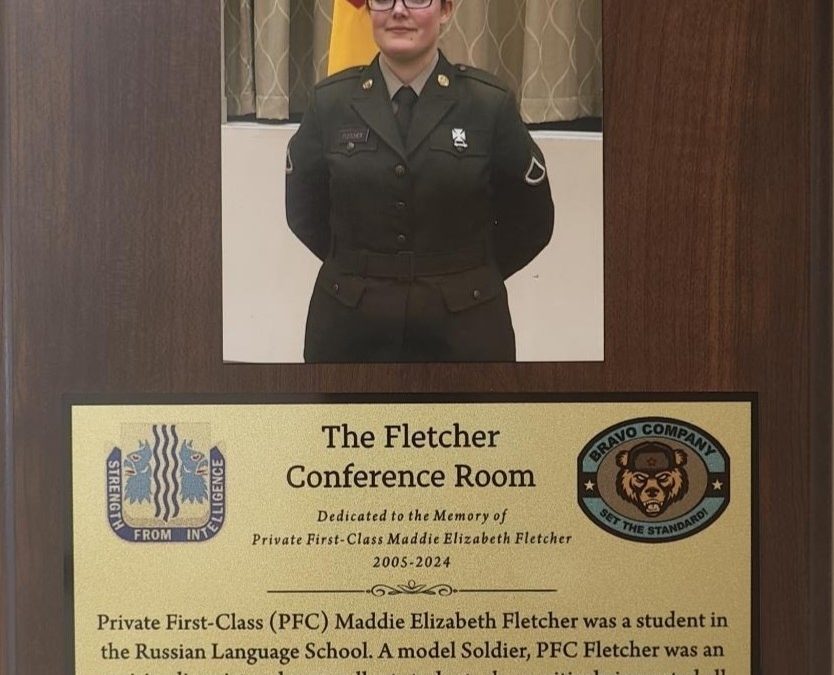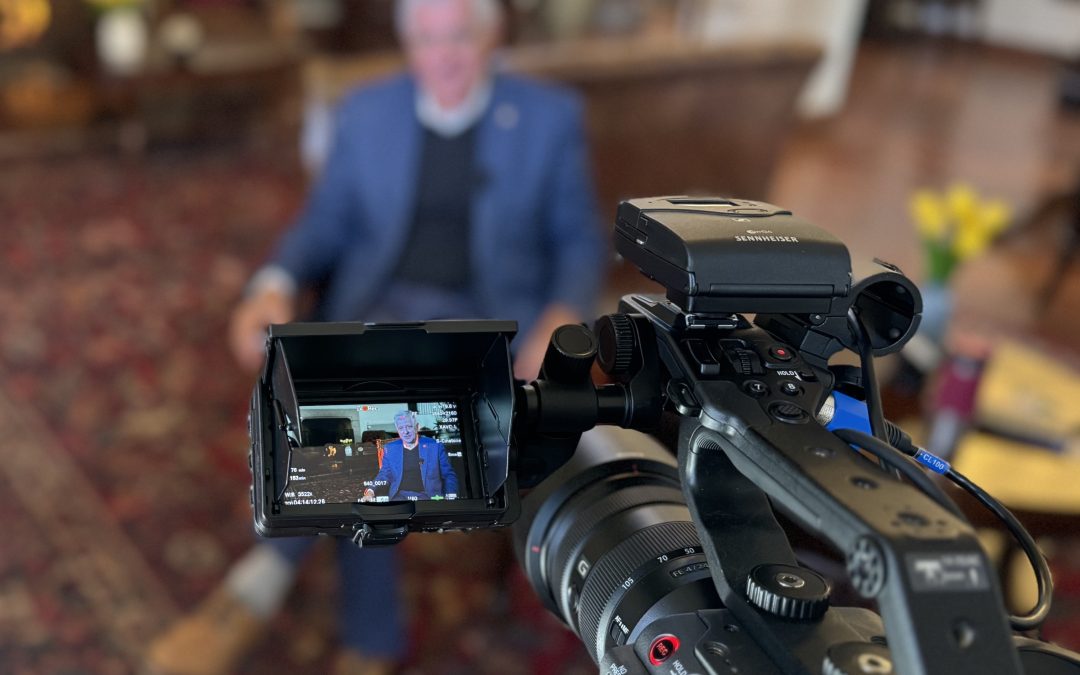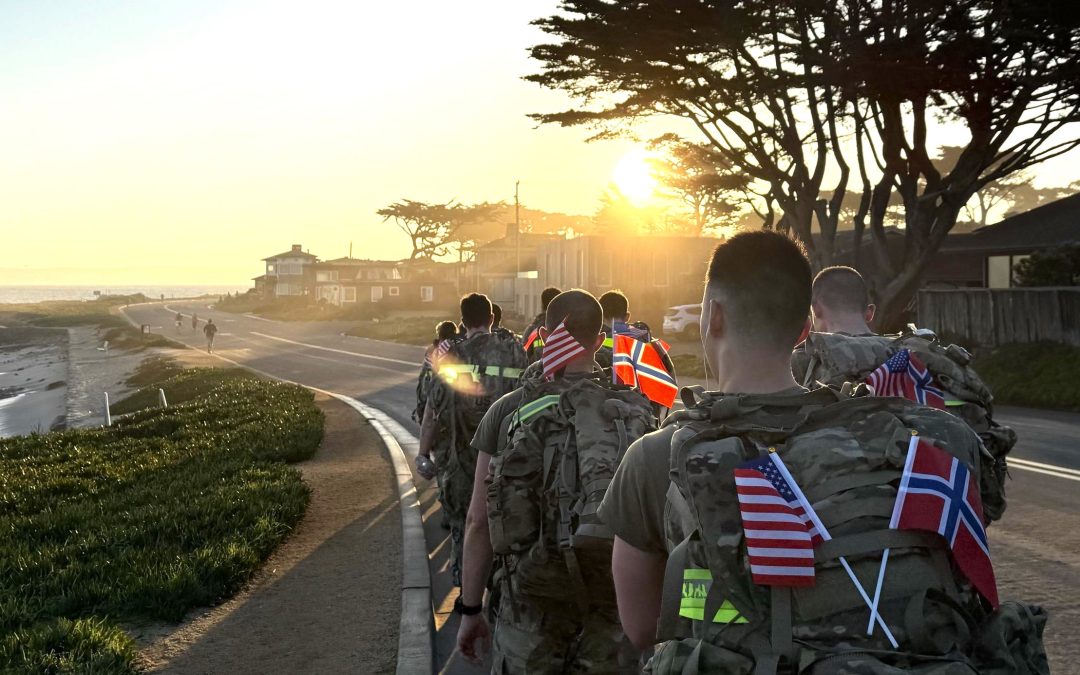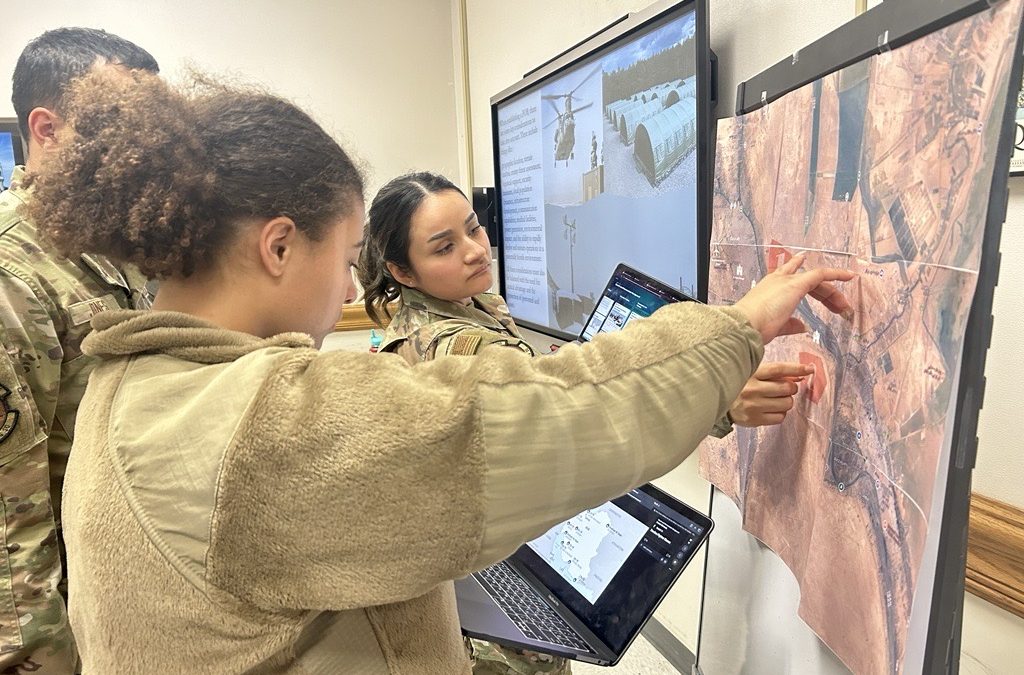By Patrick Bray
DLIFLC Public Affairs

Lt. Col. Toni Sabo, commander of the 229th Military Intelligence Battalion, the U.S. Army element at the Defense Language Institute Foreign Language Center, Presidio of Monterey, speaks with cadets from the Santa Clara University Army ROTC Battalion Feb. 28 in Santa Clara, California. During the two-and-a-half-hour leadership panel the cadets engaged in meaningful and purposeful conversations with Army officers and NCOs from the 229th. (U.S. Army photo by Patrick Bray/Released)
MONTEREY, Calif. – Soldiers from the 229th Military Intelligence Battalion, the U.S. Army element at the Defense Language Institute Foreign Language Center, Presidio of Monterey, conducted a leadership panel with the Santa Clara University Army ROTC unit Feb. 28 in Santa Clara, California.
“Our friends from the Defense Language Institute came out here for you,” said Lt. Col. Jason Noble, the professor of military science at Santa Clara, to the cadets. “And that’s because we are a profession that always gives back.”
During the two-and-a-half-hour panel the cadets engaged in meaningful and purposeful conversations with Army officers and NCOs from the 229th for the purpose of gaining mentorship and deepen cooperation between the active-duty Army and Santa Clara’s Bronco Battalion.
“Everything we do starts and stops with leadership,” said Col. Phil Deppert, commandant of DLIFLC, who also traveled to Santa Clara to speak during the leadership panel. “All of us will tell you we wish we had this type of opportunity when we were in your boots.”

Capt. Brian Foster, the executive officer of the Defense Language Institute Foreign Language Center, Presidio of Monterey, speaks with cadets from the Santa Clara University Army ROTC Battalion Feb. 28 in Santa Clara, California. During the two-and-a-half-hour leadership panel the cadets engaged in meaningful and purposeful conversations with Army officers and NCOs from the 229th Military Intelligence Battalion. (U.S. Army photo by Patrick Bray/Released)
Lt. Col. Toni Sabo, commander of the 229th, was inspired by the cadets she spoke with in their willingness to learn about the Army and their choice to serve.
“Our visit with the cadets was such a pleasure. They are invested in developing themselves as strong leaders of character and it shows in their thoughtful questions and their insightful observations during our leadership development discussion,” said Sabo.
Lt. Col. Bill Stephens, the staff judge advocate for the Presidio of Monterey, held a special discussion for cadets who were interested in a future in law in addition to lessons in leadership.
This was the first opportunity that some of the students had to sit down with a judge advocate so they were curious as to the JAG role in the Army and how they were utilized during a deployment.

Lt. Col. Bill Stephens (center), the staff judge advocate for the Presidio of Monterey, speaks with Cadet Nicolas Lazano-Landinez (left), the cadet commander of the Santa Clara University Army ROTC Battalion and a senior at Stanford University, during a leadership panel in Santa Clara, California, Feb. 28. Stephens held a special discussion for cadets who were interested in a future in law in addition to lessons in leadership. (U.S. Army photo by Patrick Bray/Released)
“It was a fantastic opportunity to discuss how, they, as future commanders, would be interacting with their JAG and how to take the best advantage of their JAGs as a resource. My advice to them as commanders is to always remember to ‘call your attorney,’” said Stephens.
Cadet Nicolas Lazano-Landinez, the cadet commander of the Bronco Battalion and a senior at Stanford University, was very impressed with what he learned from the active-duty Soldiers and said the experience of “having people from DLI come talk to us is absolutely vital.”
“They represent all walks of life. Many of the first sergeants have all this experience in combat or special operations. For us to get all of that experience poured into a two-and-a-half-hour session is invaluable,” said Lazano-Landinez, who will commission in June 2018 as an infantry officer.

Senior cadets from the Santa Clara University Army ROTC Battalion participated in the Defense Language Institute Foreign Language Center Commandant’s Run at the Presidio of Monterey in October 2017 to represent the partnership between Santa Clara and DLIFLC. Army officers and NCOs from the 229th Military Intelligence Battalion traveled to Santa Clara to engage in meaningful and purposeful conversations with the cadets Feb. 28. (U.S. Army photo by Patrick Bray/Released)
Lazano-Landinez and other senior cadets participated in DLIFLC’s Commandant’s Run at the Presidio of Monterey in October 2017, an experience he describes as “awesome and will never forget.” The cadets ran behind Deppert to represent the partnership between Santa Clara and DLIFLC.
ROTC at Santa Clara has a proud tradition that traces its roots back to the Civil War when a basic military unit was established at the university in 1861. By World War I, Santa Clara was the only institution of learning in the west that was granted an ROTC and the only institution on the West Coast to have cadets live in barracks and under constant military discipline, such as that found at the United States Military Academy. In 1968, ROTC was made optional for those attending the university.
DLIFLC provides resident instruction in 17 languages at the Presidio of Monterey, California, with the capacity to instruct another 65 languages in Washington, D.C. The Institute has graduated more than 220,000 linguists since 1941.

Col. Phil Deppert, commandant of the Defense Language Institute Foreign Language Center, Presidio of Monterey, observes cadets from the Santa Clara University Army ROTC Battalion as they engage with Army officers and NCOs from the 229th Military Intelligence Battalion in Santa Clara, California, Feb. 28. (U.S. Army photo by Patrick Bray/Released)
In addition, multiple language training detachments exists at sites in the U.S., Europe, Hawaii and Korea, spanning all the U.S. geographic combatant commands in support of the total force.




